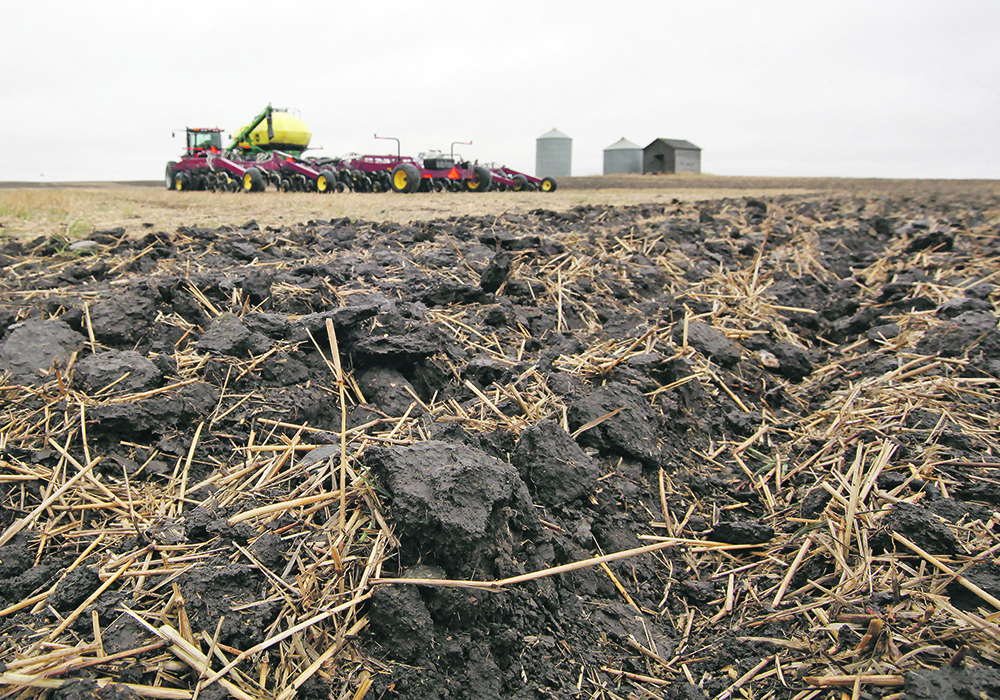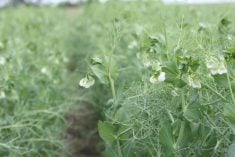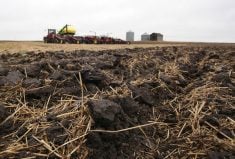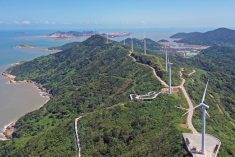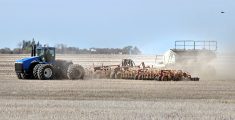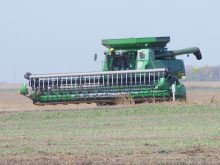National Farmers Union questions the claim, says its calculations show greenhouse emissions larger than sequestration
Saskatchewan premier Scott Moe recently launched the Sustainable Saskatchewan campaign, saying the province’s carbon footprint in canola, wheat and field pea production is lower than its competitors and that the province is likely net negative in greenhouse gas emissions from agriculture.
Announced at Canadian Western Agribition’s Grain Expo, the campaign has a website and billboard marketing designed to promote the province’s good practices.
Moe cited a study by the Global Institute for Food Security that compared the emissions intensity of the province to the rest of Canada, Australia, France, Germany and the United States. That study is now under peer review and has not been publicly released.
Read Also

Government, industry seek canola tariff resolution
Governments and industry continue to discuss how best to deal with Chinese tariffs on Canadian agricultural products, particularly canola.
“The carbon footprint of our Saskatchewan canola is 64 percent lower than the weighted average of all of our customers,” Moe said, adding that the carbon footprint from wheat is 65 percent lower, and for field peas, it’s 95 percent lower.
Moe said summerfallow acreage has plunged more than 90 percent since 1990 and no-tillage systems have positively impacted the environment by reducing wind and water erosion, enhancing biodiversity and using less energy.
“We’re talking about transformational innovative technology that was developed and perfected right here in Saskatchewan,” he told the crowd.
This has increased carbon sequestration in the province and on the Prairies by about 400 percent compared to 30 years ago, he said.
Precision farming, digital soil mapping and variable rate input application factor into more sustainable farming.
The increase in pulse acreage to about six million acres, about 15 percent of total acreage, is also key, because the crops use far less nitrogen fertilizer and lead to significant carbon reductions, Moe said.
And, as the province welcomes more canola crush expansion, more canola oil will be going into renewable fuel to help reduce emissions elsewhere.
“Saskatchewan today sequesters about 13 million tonnes annually into our soils. That’s 13 million tonnes of carbon dioxide equivalent, which amounts to about 80 percent of what this entire industry emits annually,” Moe said.
“Then on top of that you factor in the hundreds of millions of tonnes of carbon dioxide that are stored in our natural grasslands, in our forage lands, some studies say up to about 86 tonnes per acre per year. We can say with the utmost confidence that in this province, not only is agriculture net zero, we most certainly are quite likely net negative and we’re just trying to determine to what degree that is.”
Darrin Qualman, National Farmers Union director of climate policy and action, questioned that claim, asking the government to provide the data used to make the comments. He noted that NFU calculations show a pattern of emissions larger than sequestration.
“While it is true that (the NFU) analysis looks at Canada as a whole, it is almost certain that the pattern of emission from Saskatchewan would look very similar, i.e., with sequestration approximately one-quarter as large as emissions,” Qualman said in an email.
“According to our calculations based on (Environment and Climate Change) data, we believe that Saskatchewan agricultural emissions would be three to four times higher than sequestration rates.”
The response from agriculture minister David Marit’s office said that Saskatchewan’s agricultural emissions in 2020 were 16.053 million tonnes, with crop land sequestration of 12.795 million tonnes, for net emissions of 3.258 million tonnes.
However, the calculation doesn’t include sequestration in native prairie and tame forage.
“While grassland sequestration is not included in the (National Inventory Report), some studies suggest, at the low end, native prairie can sequester 22 kilograms of carbon dioxide equivalent per acre,” said the reply.
“With Saskatchewan having over 12 million acres of native prairie and an additional seven to eight million acres of tame forages, Saskatchewan agriculture is at the very least net neutral, if not net negative as a result of these calculations.”
Qualman said he was still seeking to clarify whether the emissions figure included categories such as farm machinery, fertilizer and farm chemical production. He also said while it’s true that grassland sequestration isn’t included in calculations, neither is wetland destruction that releases carbon.
Meanwhile, Moe said the province has to be bolder in telling its story of sustainable production to satisfy existing markets and perhaps create premiums in new markets.
He told reporters that the rest of Canada and the world should know what Saskatchewan has done to reduce its carbon footprint and that it is a sustainable producer of what the world needs.
He invited the federal government to be equally as proud.
“We aren’t seeing that in the policies that are coming from the federal government. A cap on fertilizer emissions, I mean, seriously? We have the most sustainable products being produced here in the world and you want to meddle with a system that ultimately is working and working better than anywhere else on Earth,” he said.




